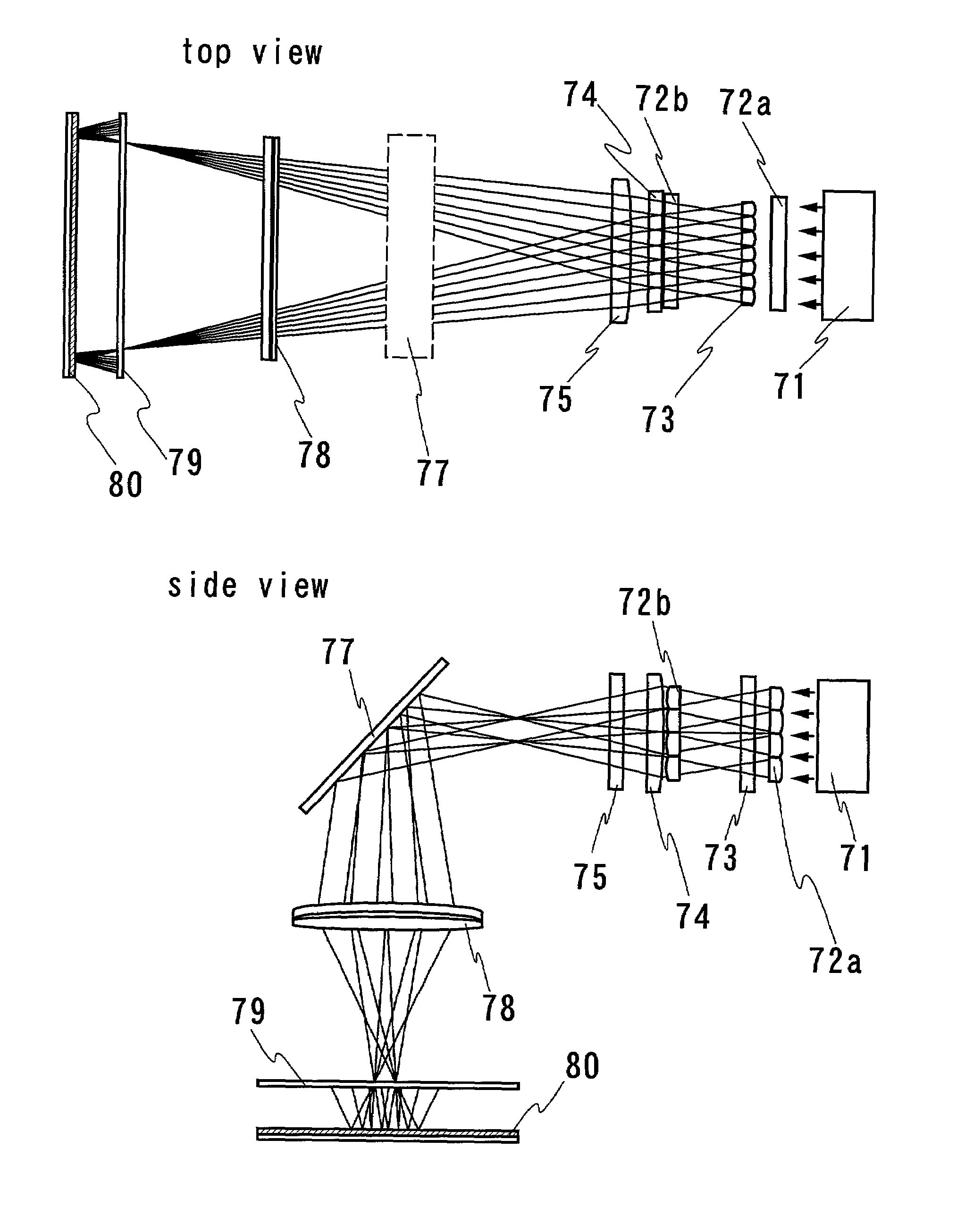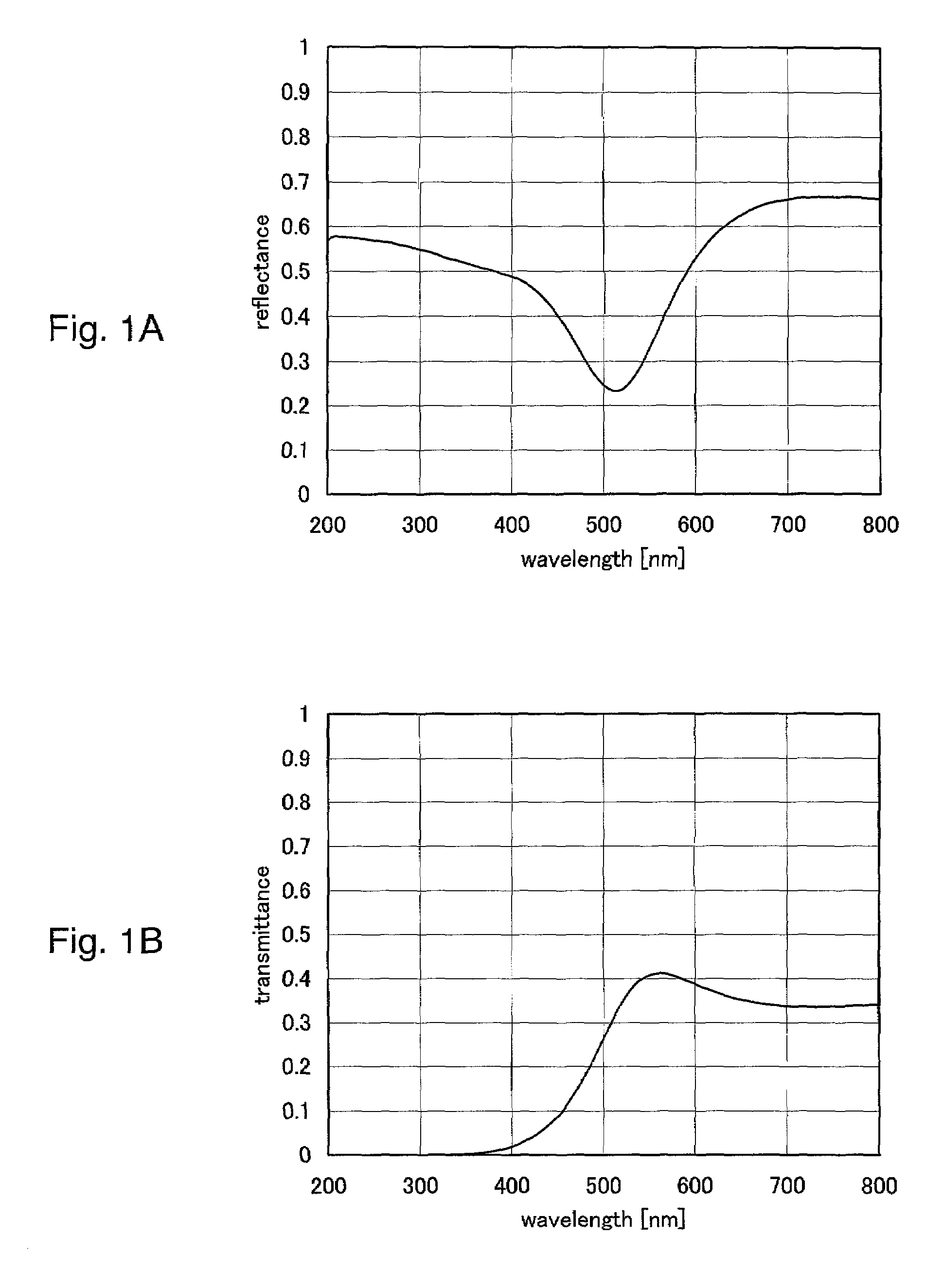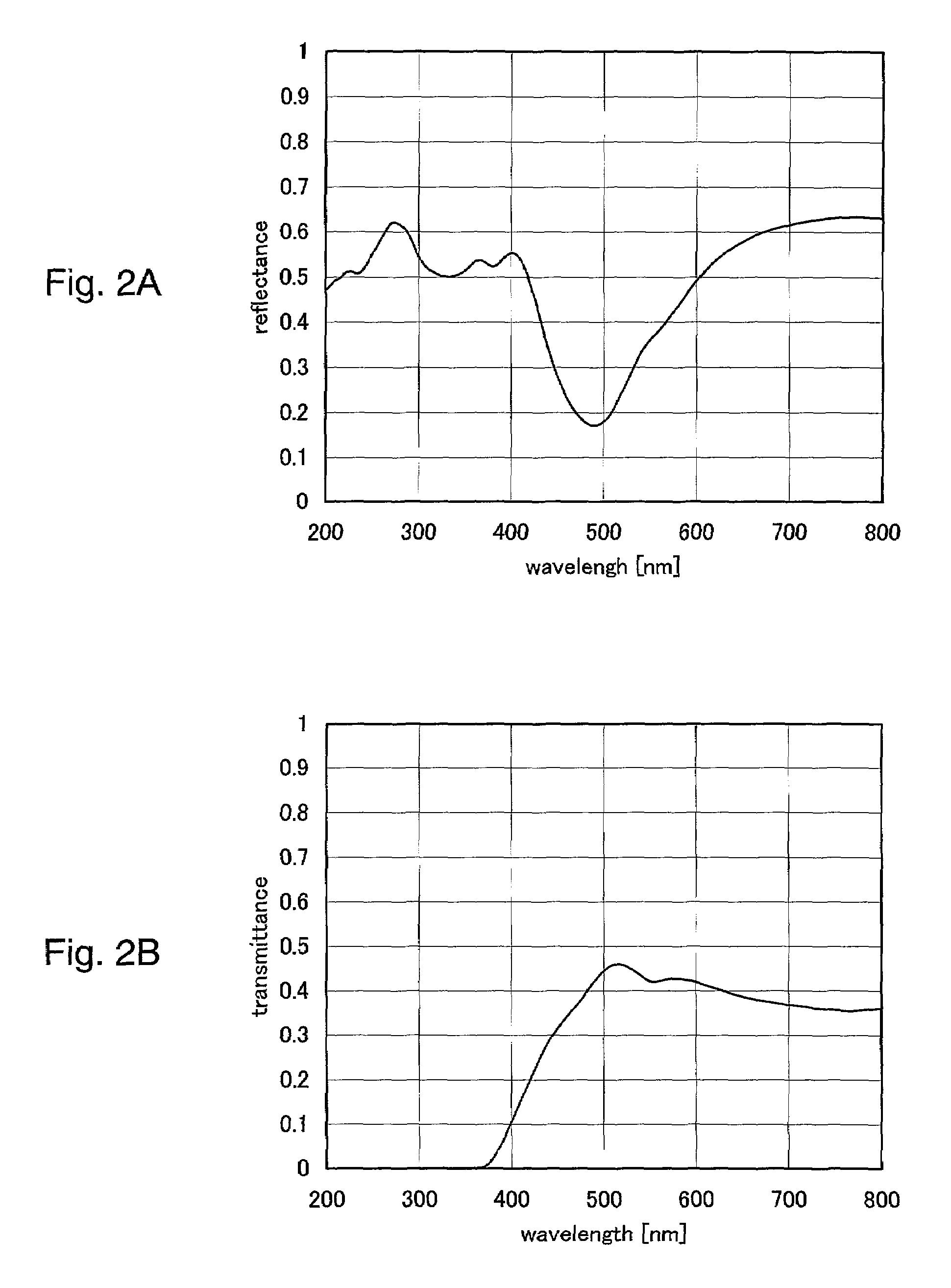Laser irradiation method and method of manufacturing a semiconductor device
a semiconductor device and laser irradiation technology, applied in the direction of solid-state devices, crystal growth processes, chemistry apparatus and processes, etc., can solve the problems of high mass production, inability to control the position of large crystal grains, and hardly possible channel forming regions, so as to improve the performance of semiconductor devices, reduce the number of crystal grain boundaries that may be contained in channel forming regions, and increase the grain size of crystal grains
- Summary
- Abstract
- Description
- Claims
- Application Information
AI Technical Summary
Benefits of technology
Problems solved by technology
Method used
Image
Examples
embodiment mode 1
[0075]An embodiment mode of the present invention is described below with reference to FIGS. 7A to 8B.
[0076]First, an example of a method of manufacturing a reflecting member is described with reference to FIG. 7A. In FIG. 7A, as a substrate 20, a glass substrate or a synthetic quartz glass substrate is used. Further, a plastic substrate having heat resistance that withstands a process temperature may be used.
[0077]Then, a reflecting film 21 is deposited on the substrate 20 by a known means (a sputtering method, an LPCVD method, a plasma CVD method or the like). As the reflecting film 21, a film with high reflectivity to a wavelength of a laser beam used in crystallization and also with heat resistance that withstands the process temperature is desirable. The reflectivity most suitable for crystallization depends on the state of a semiconductor film, the wavelength of the laser beam and the like.
[0078]As described above, the reflecting member is manufactured. Of course, instead of m...
embodiment mode 2
[0084]Another structure of the present invention, which is different from that of Embodiment Mode 1, is described below with reference to FIGS. 22A to 24E.
[0085]First, a method of manufacturing a reflecting member is described with reference to FIGS. 22A and 22B. In FIGS. 22A and 22B, as a substrate 220, a glass substrate or a synthetic quartz glass substrate is used. Further, a plastic substrate having heat resistance that withstands a process temperature may be used.
[0086]Then, a reflecting film 221 is deposited on the substrate 220 by a known means (a sputtering method, an LPCVD method, a plasma CVD method or the like). As the reflecting film 221, a film with high reflectivity to a wavelength of a laser beam used in crystallization and also with heat resistance that withstands the process temperature is desirable. The reflectivity most suitable for crystallization depends on the state of a semiconductor film, the wavelength of the laser beam and the like.
[0087]Thereafter, the ref...
embodiment 1
[0098]An embodiment of the present invention is described below with reference to FIGS. 7A to 8B.
[0099]First, a method of manufacturing a reflecting member is described with reference to FIG. 7A. In FIG. 7A, as a substrate 20, a glass substrate or a synthetic quartz glass substrate is used. Further, a plastic substrate having heat resistance that withstands a process temperature may be used. In this embodiment, 1737 substrate glass of Corning Corp. is used.
[0100]Then, a reflecting film 21 is deposited on the substrate 20 by a known means (a sputtering method, an LPCVD method, a plasma CVD method or the like). As the reflecting film 21, a film with high reflectivity to a wavelength of a laser beam used in crystallization and also with heat resistance that withstands the process temperature is desirable. The reflectivity most suitable for crystallization depends on the state of a semiconductor film, the wavelength of the laser beam and the like. In this embodiment, tantalum (Ta) is fo...
PUM
| Property | Measurement | Unit |
|---|---|---|
| wavelengths | aaaaa | aaaaa |
| length | aaaaa | aaaaa |
| distance | aaaaa | aaaaa |
Abstract
Description
Claims
Application Information
 Login to View More
Login to View More - R&D
- Intellectual Property
- Life Sciences
- Materials
- Tech Scout
- Unparalleled Data Quality
- Higher Quality Content
- 60% Fewer Hallucinations
Browse by: Latest US Patents, China's latest patents, Technical Efficacy Thesaurus, Application Domain, Technology Topic, Popular Technical Reports.
© 2025 PatSnap. All rights reserved.Legal|Privacy policy|Modern Slavery Act Transparency Statement|Sitemap|About US| Contact US: help@patsnap.com



